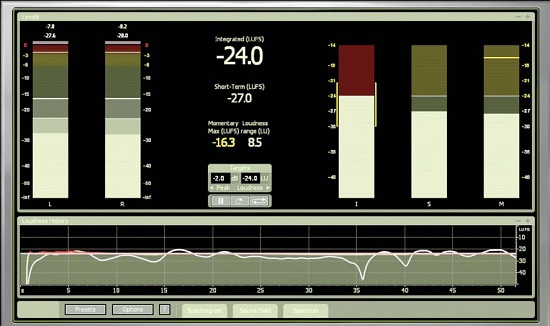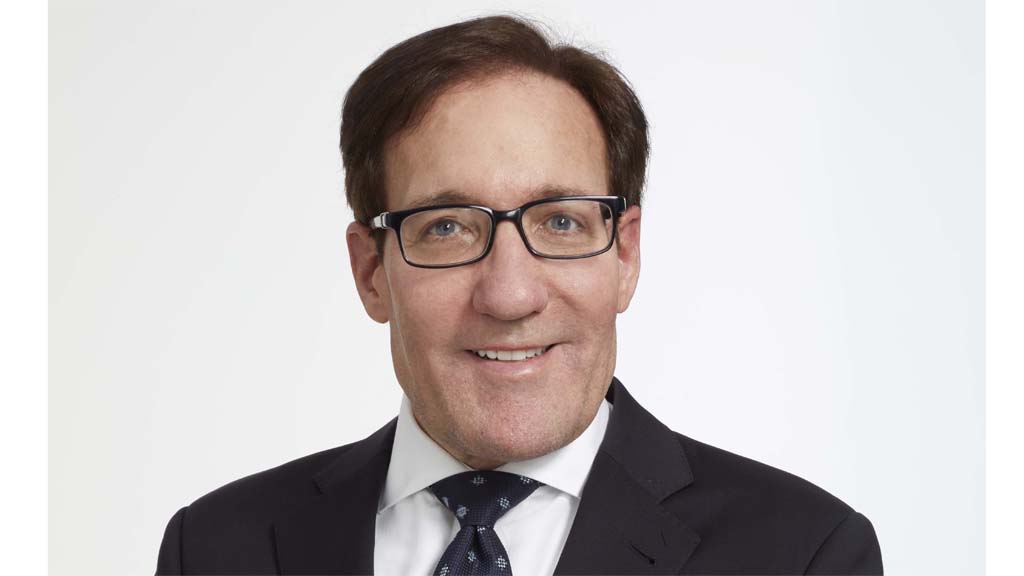The CALM Act is nothing new, especially to those who have been working on loudness management for years. The general assumption is that everyone “gets it” now, yet I continue to encounter others who don’t fully understand the rule and find themselves floundering with aspects of implementation, typically with measurement. In this column, we’ll look at how to measure content by delving into the official documents of the FCC Report and Order 11-182, FCC Order and Further Notice of Proposed Rulemaking 13-141, and ATSC RP A/85:2013.
METERS
Measurement of all content must be done with a loudness meter that measures LKFS and that preferably uses the ITU-R BS.1770-3 algorithm. The FCC R&O states that, “Compliance with the [recommended practice] requires industry to use the International Telecommunication Union Radiocommunication Sector (ITU-R) Recommendation BS.1770 measurement algorithm.” Gating has been added to the newer BS.1770-3 measurement for audio content measuring below −70 LKFS, and it includes a sliding relative gate for content that falls 10 dB below the absolute gated measurement.
This gating is designed to insure that quiet sections of audio don’t lower the overall loudness reading, which should help measured content match more closely. FCC document 13-141 explains it this way; “BS.1770-3 employs ‘gating’ that will exclude very quiet or silent passages of a commercial when calculating the average loudness of that commercial.” 1770-3 was adopted by the ATSC in the 2013 refresh of A/85, and while the FCC currently allows the use of 1770-1 or 1770-3, the newer version will likely become the official version in November 2014.

THE ANCHOR ELEMENT
The anchor element is whatever piece of audio the listener will be most interested in hearing when viewing the program and is critical to measuring content according to A/85. The anchor element will usually be dialog, but it could be music or another audio element if the program is not heavily speech dependent. A/85 defines it as, “The perceptual loudness reference point or element around which other elements are balanced in producing the final mix of the content, or that a reasonable viewer would focus on when setting the volume control.” In long-form content, the anchor element is to be isolated from other audio elements, measured, and its loudness measurement is considered the loudness value of the content.
MEASURING SHORT-FORM CONTENT
Short-form content is defined in A/85 as, “Advertising, commercial, promotional or public service related material or essence (also termed “interstitial” content). The typical duration is less than approximately two to three minutes.” To determine the loudness value of short-form content, measure the average loudness of the full mix of the content for its entire length. All short-form content is to be measured using this method.
The document does go on to note that this type of measurement could be a problem for wide dynamic range short form content because, “The louder elements of this type of material will increase the loudness measured with a long-term integrated method, and consequently reduce the perceived Anchor Element loudness after normalization. This can cause an unacceptable match to long-form material measured with an anchor-based method.”
No alternative measurement methods are suggested but if loudness-matching problems are experienced with wide dynamic range short-form content, remeasuring using the anchor element measurement method may solve them.
The professional video industry's #1 source for news, trends and product and tech information. Sign up below.
MEASURING LONG-FORM CONTENT
Long-form content is everything that isn’t short form and measuring it is not nearly as straightforward. When it comes to long-form content it’s all about the anchor element. A/85 suggests that during production and post-production the anchor element is to be isolated and measured. If it can be isolated, then a “Representative sample of the Anchor Element,” can be measured instead of the entire program according to A/85.
However, if the anchor element cannot be isolated then it is necessary to measure the average loudness of the entire length of the entire program. For long-form content that is already finished, “A section of the content that is representative of the Anchor Element (typically dialog) should be isolated and measured and reported as the Dialog Level of the long-form content.” A/85 goes on to state that if the anchor element cannot be determined and isolated enough to measure “The loudness of the element of the content that a reasonable viewer would focus on when setting the volume control should be measured and reported as the Dialog Level of the long form content.” If even that isn’t possible then the full mix of the entire program will have to measured.
Measurement during live production is covered briefly in A/85 but the process doesn’t seem clearly defined, though some excellent suggestions are made about mixing using a set control room volume level and focusing on listening with the ears rather than watching meters. Based on information in the document and from experience, a process similar to this should work well: Mix engineers should use a LKFS meter and measure the average loudness of each segment (or full program if continuous) while mixing to the predetermined target loudness for the program. At the same time, the mix engineer may choose to monitor a short-term sliding scale on the loudness meter to keep track of the loudness of the last 3–10 seconds as a guide.
MEASURING DOWNMIX
Measuring the downmix loudness of content has become critical because its loudness value may not match the loudness value of the surround original. Whether the loudness of the downmix and surround version of content match is dependent on where elements are placed in the soundfield. For example, placing the same source across all front channels can boost the downmix loudness by several dB, which means it may no longer match the loudness of adjacent content.
This is an extremely condensed version of how to measure content according to CALM but I hope it makes measurement a little bit clearer for anyone having trouble with it. A/85 and the FCC documents can be a bit daunting, but they contain valuable information that is worth the time you’ll spend reading through them.
Jay Yeary is a television audio engineer who spends his days working for a large media corporation. He can be reached through TV Technology or via Twitter at @TVTechJay.
